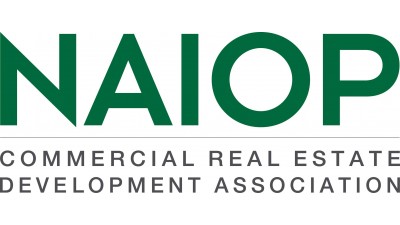Urban Pioneers: Developers Brave Unknowns In Search Of Infill Opportunity

When Courtland Development CEO Jon Napper found an opportunity in the Dallas neighborhood of Deep Ellum to convert a brick-and-timber warehouse into a loft-style office, he had no idea what was beneath the foundation. Located in what was an industrial area in the 1930s, the property’s parking lot was the site of an old icehouse and an environmental disaster, Napper said.
Hundreds of thousands of dollars' worth of cleanup later, the redeveloped office would become Yahoo's regional headquarters while the rest of Deep Ellum transitioned from empty warehouses and graffiti into Dallas’ version of Williamsburg, Brooklyn.
Infill development, while expensive, unpredictable and often hard to find, could provide developers with a golden opportunity to capitalize on gentrifying neighborhoods and appeal to a growing wave of urbanism throughout the country.
Dallas is a case study for the surge of young professionals moving into urban cores. Downtown and Uptown Dallas added 29,209 residents from 2015 to 2016. The swelling population creates greater demand for the city’s nearby residential and office stock. In popular neighborhoods like Uptown and Oak Lawn, office vacancy was at 8.7% in Q1 while multifamily vacancy was at 5.7% across Dallas in Q1.
Dallas has followed the trend of developers across U.S. cities converting older office buildings into loft apartments and turn-of-the-century multistory warehouses into creative office. In Chicago, the old post office is undergoing a $500M mixed-use redevelopment, and in Atlanta, the 2.1M SF Ponce City Market project transformed a former factory into 259 residences, 550K SF of office and 300K SF of retail.
“The buildings that are winning are ones that have access to great transportation, public or otherwise, and amenities like retail and hotels,” Granite Properties President and Chief Operating Officer Greg Fuller said. “If you can find an infill location that has all of these amenities nearby, tenants are generally willing to pay more.”
Fuller found an opportunity in Dallas’ historic West End to convert an abandoned multistory warehouse near restaurants, shopping and hotels into 215K SF of office and ground-floor retail. Factory Six03 will offer brick-and-timber authenticity with open office plans, lounge space and outdoor terraces, features that appeal to millennial workers, Fuller said.
Redeveloping the former Brown Cracker and Candy Co. headquarters required Granite Properties to work with the City of Dallas to comply with historic preservation guidelines. It also allowed the developer to take advantage of tax credits, which provide a funding source that can keep costs down and allow for more competitive tenant pricing.

The added historical preservation requirements augment the risk of redevelopment.
“You have to preserve everything that is there. Meanwhile, you are underwriting to construction that you are not sure exactly what you are going to find,” Fuller said. “You need to prepare for that, both financially and from a timing perspective.”
E-commerce growth has also led to a renewed interest in industrial infill. As online retailers move into more time-sensitive product areas like fresh groceries, having fulfillment centers close to major populations has become a necessity. The challenge lies in creating a distribution space that fits the needs of the larger neighborhood, and whether the space can be modernized.
“It is a whole lot easier to take that warehouse and convert it into a new office,” Napper said. “Where it becomes challenging is environmental issues, design issues, parking regulations, issues where the original product was not built to meet today’s requirements.”
Geographic restrictions and availability can also make infill difficult to redevelop across all asset classes. Whereas Dallas has the ability to radiate outward, cities like San Francisco and Seattle are bound by geographic limitations. Developers have to get creative. Vacant malls are being looked at as potential distribution and fulfillment centers while the multistory warehouse model popular in the early 1900s has come back into fashion for crowded urban areas.
Both Napper and Fuller said cities are often receptive to adaptive reuse, which grows the local population, which in turn supports nearby restaurants and retailers. The added building value also leads to higher tax rolls, Napper said.
Infill projects are often difficult to find. But when the right opportunity comes along, the potential for success is high.
“It gives you that unique authentic experience that today’s workers like,” Fuller said. “You’ve taken something old and made it new again.”
Learn more about infill development and the latest commercial real estate news and trends from CRE.Converge 2017 Committee Chairman Greg Fuller, Jon Napper and other CRE leaders at NAIOP's CRE.Converge 2017, from Oct. 10 to Oct. 12 in Chicago.

